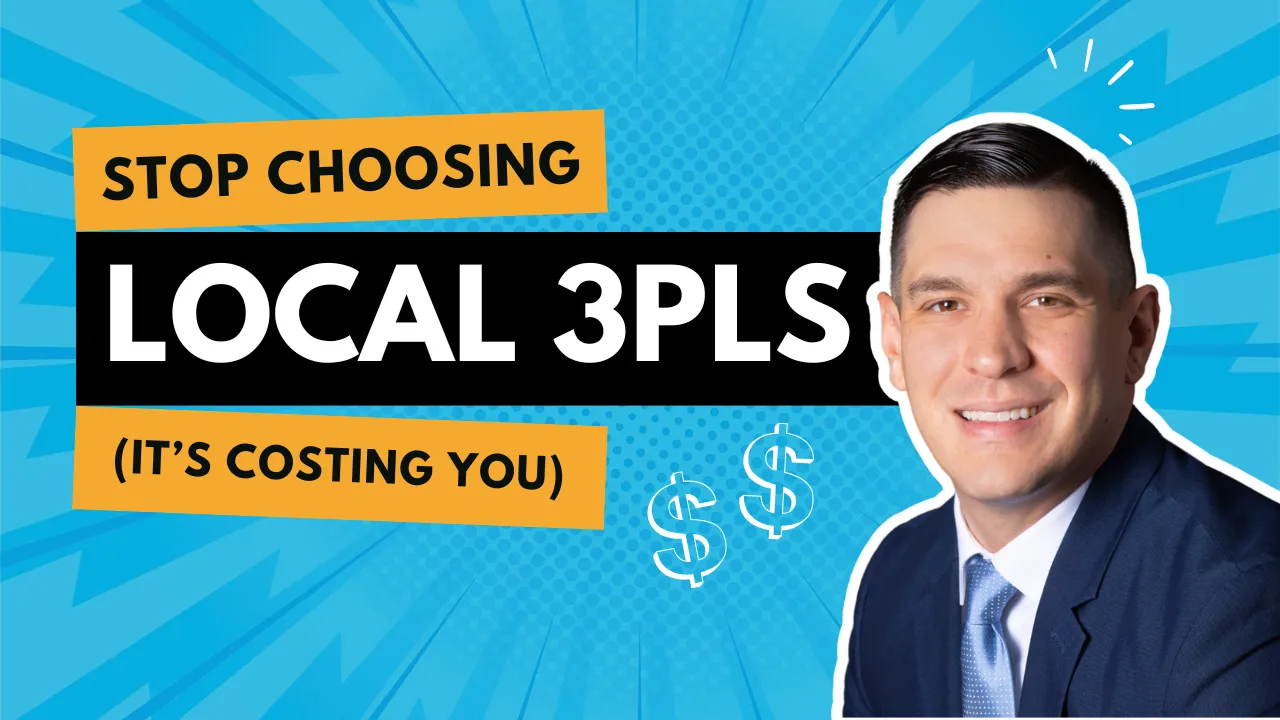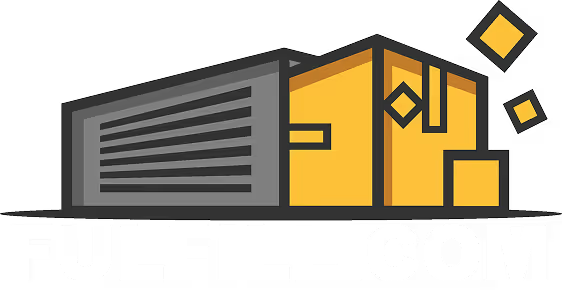Quick Jump
Most eCommerce brands believe their 3PL should be within driving distance. This conventional wisdom is costing them thousands of dollars annually. Here's why expanding your search radius could be the smartest fulfillment decision you make this year.
Picture this: You're launching your eCommerce brand and need a fulfillment partner. Your first instinct? Search for "3PL near me" or filter providers within 50 miles of your office. It feels right – you can visit the warehouse, oversee operations, and maintain that hands-on control you're used to.
But what if this seemingly logical decision is actually one of the most expensive mistakes you could make?
After analyzing hundreds of 3PL partnerships across the country, we've discovered a counterintuitive truth: 80% of businesses that prioritize proximity when selecting a 3PL end up paying 15-30% more in total fulfillment costs compared to those who prioritize operational excellence regardless of location.
Let's explore when proximity matters, when it doesn't, and why expanding your search radius by just 100-200 miles could transform your fulfillment economics.
The Proximity Trap: Why We're Wired to Choose Wrong
The desire for a nearby 3PL stems from legitimate concerns:
- "I want to visit my inventory"
- "What if there's a problem I need to solve in person?"
- "I feel more comfortable working with local partners"
- "Shipping my inventory far away seems expensive"
These concerns made perfect sense 20 years ago. But in today's digital logistics landscape, they're often expensive misconceptions that ignore how modern fulfillment actually works.
When Close Proximity Actually Makes Sense (The 20%)
Before we dismantle the proximity myth, let's acknowledge when having a nearby 3PL genuinely adds value:
1. High-Touch Customization Operations
If your business requires:
- Daily custom kitting with frequently changing components
- Personalized packaging that requires your direct oversight
- Products assembled-to-order with your proprietary processes
- Regular hands-on quality control interventions
Then yes, proximity can justify its premium. These scenarios typically represent less than 10% of eCommerce fulfillment needs.
2. Ultra-Low Volume Startups
For businesses shipping fewer than 500 orders monthly:
- The cost differential between 3PLs is often minimal
- Learning the ropes with a nearby partner can provide comfort
- Transportation costs to ship inventory remain negligible
- The educational value of warehouse visits may outweigh cost savings
3. Specialized Regulatory Requirements
Certain industries require frequent audits or inspections:
- Medical devices needing FDA oversight
- Hazardous materials with specific handling protocols
- High-value items requiring personal security verification
- Products with extremely short shelf lives requiring daily monitoring
4. Local Market Focus
If 90%+ of your customers are within 100 miles:
- Last-mile delivery optimization becomes paramount
- Local carrier relationships matter more than national networks
- Same-day delivery capabilities can differentiate your brand
- The proximity actually aligns with your distribution needs
When Distance Saves Money (The 80% Reality)
For the vast majority of eCommerce businesses, choosing a 3PL based on proximity is like choosing a bank based on having the prettiest building – you're optimizing for the wrong variable.
The True Cost of Proximity Preference
Let's break down the real numbers using a typical mid-sized eCommerce brand shipping 10,000 orders annually:
Scenario A: Local 3PL (25 miles away)
- Higher labor costs (urban area): +$0.75 per order
- Limited carrier negotiations: +$0.45 per shipment
- Smaller facility, less efficiency: +$0.35 per order
- Convenient quarterly visits: -$2,400 annually
- Total additional cost: $15,500 - $2,400 = $13,100 annually
Scenario B: Optimized 3PL (200 miles away)
- Lower labor costs (strategic location): Baseline
- Superior carrier rates: Baseline
- Larger, more efficient facility: Baseline
- Quarterly visit travel costs: +$3,200 annually
- Total additional cost: $3,200 annually
Net benefit of choosing the distant 3PL: $9,900 annually
Why Distance Becomes Irrelevant in Modern Fulfillment
Technology has fundamentally changed the fulfillment game:
- Real-Time Visibility: Modern WMS platforms provide more visibility than walking the warehouse floor
- Video Verification: Quality issues can be diagnosed and resolved via video calls in minutes
- Automated Reporting: You'll know about problems before you could physically visit anyway
- Digital Integration: Your entire operation runs through APIs, not in-person meetings
The Hidden Advantages of Strategic Distance
Expanding your search radius unlocks advantages beyond cost savings:
1. Access to Specialized Expertise That perfect 3PL for your beauty brand might be 300 miles away but have:
- FDA-compliant facilities
- Experience with your exact product type
- Established processes for your sales channels
- Technology that integrates seamlessly with your stack
2. Optimal Shipping Zones A strategically located 3PL can:
- Reach 80% of the US population in 2 days via ground
- Reduce average shipping zones from 5 to 3
- Cut shipping costs by 20-30% through better geography
- Improve delivery times without expedited shipping
3. Labor Market Advantages 3PLs in secondary markets often provide:
- 20-40% lower labor costs than major metros
- More stable workforce with lower turnover
- Greater operational flexibility during peak seasons
- Better worker-to-order ratios due to lower overhead
4. Scalability Without Constraints Distant 3PLs typically offer:
- Larger facilities with room to grow
- More sophisticated automation investments
- Better inventory storage rates
- Professional management focused on efficiency over relationships
The Mathematics of Modern 3PL Selection
Let's examine a data-driven framework for 3PL selection that prioritizes total landed cost over proximity:
Cost Components to Evaluate
1. Inbound Freight (One-Time or Periodic)
- Local 3PL: $0 - $500 per shipment
- Distant 3PL: $500 - $1,500 per shipment
- Annual impact at monthly replenishment: $6,000 - $18,000
2. Storage Costs (Monthly)
- Local 3PL (urban): $25-35 per pallet
- Distant 3PL (strategic): $15-22 per pallet
- Annual savings on 50 pallets: $6,000 - $7,800
3. Pick and Pack (Per Order)
- Local 3PL: $3.50 - $5.50
- Distant 3PL: $2.50 - $4.00
- Annual savings on 10,000 orders: $10,000 - $15,000
4. Shipping Costs (Per Package)
- Local 3PL (limited carriers): $8.50 average
- Distant 3PL (optimized location): $7.25 average
- Annual savings on 10,000 shipments: $12,500
5. Technology and Integration
- Local 3PL (basic systems): Manual processes add $0.50/order
- Distant 3PL (advanced WMS): Automated efficiency baseline
- Annual savings on 10,000 orders: $5,000
Total Annual Savings: $33,500 - $48,300
Even accounting for $6,000 in annual inbound freight increases and $3,000 in travel costs, the net benefit ranges from $24,500 to $39,300 annually.
The Modern 3PL Selection Framework
To avoid the proximity trap, follow this strategic selection process:
Step 1: Define Your True Requirements
- Order volume and growth projections
- Product characteristics and handling needs
- Technology integration requirements
- Customer delivery expectations
- Budget constraints and cost targets
Step 2: Map Optimal Fulfillment Geographies
- Analyze customer distribution heat maps
- Calculate optimal shipping zones
- Consider multi-node strategies for growth
- Evaluate carrier hub proximity
Step 3: Expand Your Search Intelligently
- Start with 300-mile radius from optimal shipping points
- Include secondary markets with strong logistics infrastructure
- Research specialized 3PLs in your product category
- Consider markets with favorable labor costs
Step 4: Evaluate Total Landed Cost
- Model all cost components, not just quoted rates
- Include shipping cost projections based on location
- Factor in technology and efficiency differences
- Calculate ROI including travel and transition costs
Step 5: Test the Partnership Remotely
- Request video facility tours
- Evaluate technology and reporting capabilities
- Check references from similar businesses
- Run pilot programs before full commitment
Breaking Free from the Proximity Mindset
The most successful eCommerce brands understand that fulfillment is about outcomes, not oversight. They choose partners based on:
- Capability over convenience
- Technology over touch points
- Efficiency over proximity
- Results over relationships
This shift in mindset typically results in:
- 20-30% reduction in total fulfillment costs
- 15-25% improvement in delivery times
- 50%+ reduction in fulfillment-related issues
- Scalability that proximity-based partners can't match
Action Steps: Your Path to Optimized Fulfillment
For Brands Currently Using a Local 3PL:
- Calculate your true cost per order including shipping
- Benchmark against 3PLs 200-300 miles away
- Model potential savings over 12 months
- Test with a small SKU subset if savings exceed 20%
For Brands Selecting Their First 3PL:
- Resist the urge to filter by distance
- Define success metrics beyond convenience
- Interview 3PLs based on capability fit first
- Visit finalists regardless of distance – ROI justifies travel
For Growing Brands Hitting Capacity Limits:
- View expansion as an opportunity to optimize
- Consider multi-node strategies over local expansion
- Evaluate how geography could reduce shipping costs
- Choose growth partners based on strategic location
The Strategic Reality Check
Ask yourself these questions:
- How often do you actually need to visit your 3PL?
- What problems require physical presence to solve?
- Could technology provide better visibility than visits?
- Is convenience worth $20,000+ annually?
For 80% of businesses, the honest answers reveal that proximity is a expensive preference, not a business requirement.
Conclusion: Distance Is Your Competitive Advantage
The eCommerce landscape rewards efficiency, not proximity. While it's natural to want your fulfillment partner nearby, this desire often conflicts with what's best for your business and customers.
The data is clear: 80% of businesses choosing 3PLs based on proximity are overpaying by 15-30% for fulfillment. That's money that could be invested in inventory, marketing, product development, or simply improving margins.
By expanding your search radius by just 100-200 miles, you unlock access to:
- Specialized expertise in your product category
- Strategic locations that reduce shipping costs
- Technology and efficiency that proximity can't match
- Scalability that supports long-term growth
The most successful brands we work with have learned this lesson: In modern fulfillment, the best 3PL isn't the closest one – it's the one that delivers the best results for your customers while optimizing your costs.
Your next step? Stop searching for "3PL near me" and start searching for "best 3PL for [your specific needs]." Your bottom line will thank you, your customers will receive better service, and you'll wonder why proximity ever mattered in the first place.
Remember: Your customers don't care where their orders are fulfilled. They care about receiving them quickly, accurately, and affordably. Choose your 3PL accordingly.
Ready to find the perfect 3PL match based on capability, not proximity? Use our free matching service to receive quotes from pre-vetted 3PLs that align with your business needs – regardless of distance.










